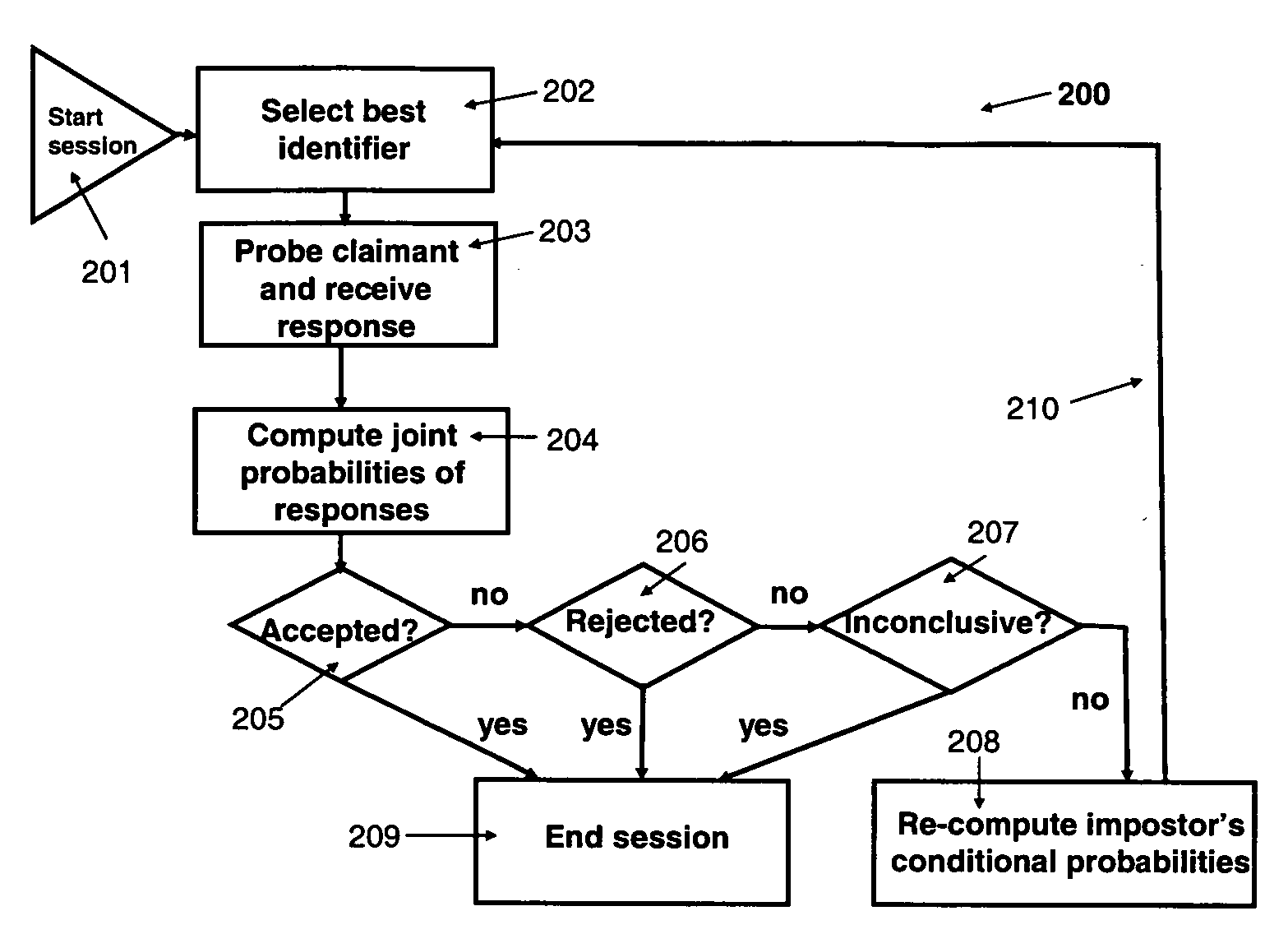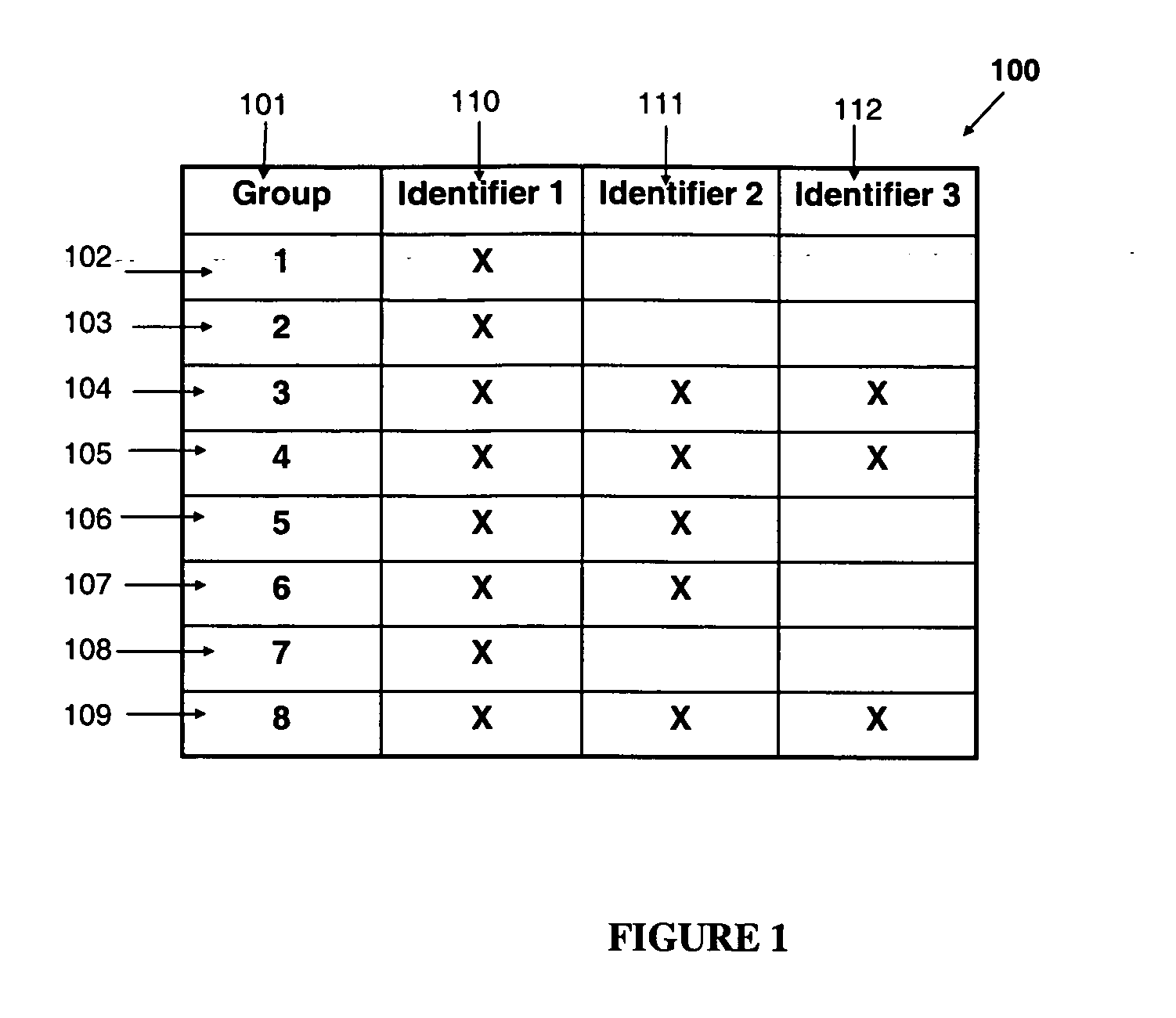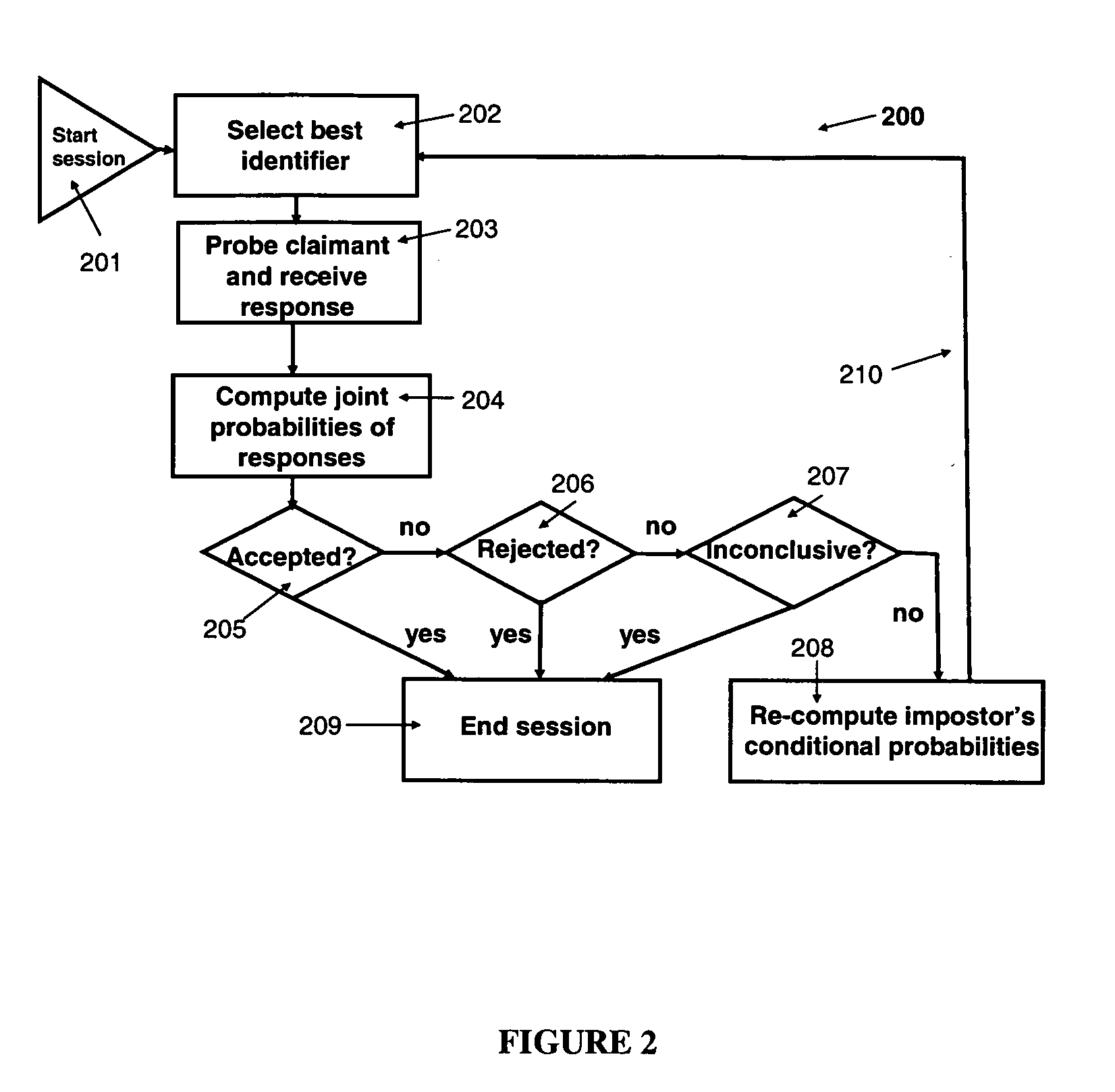Automated adaptive method for identity verification with performance guarantees
a technology of automatic adaptive method and identity verification, applied in the field of identity verification of claimants, can solve the problems of not providing quantified probability of concluding a session, method does not provide quantified probability of terminating a session, and does not offer the same degree of certainty, etc., to achieve a reasonable proportion of ambiguous termination
- Summary
- Abstract
- Description
- Claims
- Application Information
AI Technical Summary
Benefits of technology
Problems solved by technology
Method used
Image
Examples
Embodiment Construction
[0021]Referring now to the figures and to FIG. 1 in particular, there is shown the record 100 stored for a single identity, referred to as identity r. The following notation for input parameters is used:
TABLE 1Input Parameters for Identity rNotationParameter DescriptionrIndex for record r, where record r stores trusted identifiers for identity r.kIndex for identifiers.gIndex for a group of identifiers, g = 1, 2, . . . , G, where each identifier k isuniquely mapped into one of the groups and G is the number of groupsidr(k)The trusted information of identifier k in record r.PLr(k = match)The input estimate of the probability that a legitimate claimant foridentity r would respond with a match to identifier k.PLr(k = no-match)The input estimate of the probability that a legitimate claimant foridentity r would respond with a no-match to identifier k.PI0r(k = match)The input estimate of the probability that an ignorant impostor claimingidentity r would respond with a match to identifier k...
PUM
 Login to View More
Login to View More Abstract
Description
Claims
Application Information
 Login to View More
Login to View More - R&D
- Intellectual Property
- Life Sciences
- Materials
- Tech Scout
- Unparalleled Data Quality
- Higher Quality Content
- 60% Fewer Hallucinations
Browse by: Latest US Patents, China's latest patents, Technical Efficacy Thesaurus, Application Domain, Technology Topic, Popular Technical Reports.
© 2025 PatSnap. All rights reserved.Legal|Privacy policy|Modern Slavery Act Transparency Statement|Sitemap|About US| Contact US: help@patsnap.com



